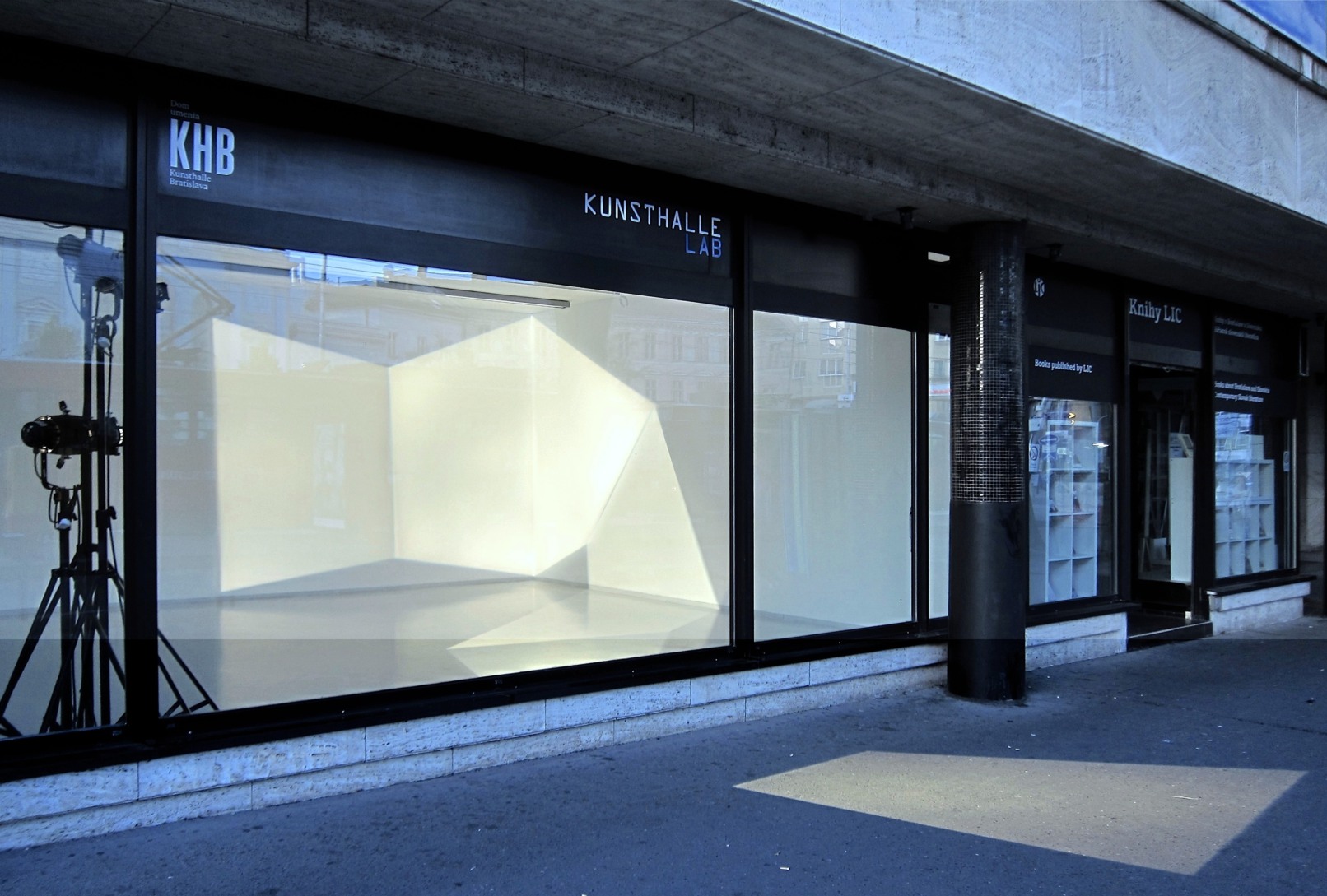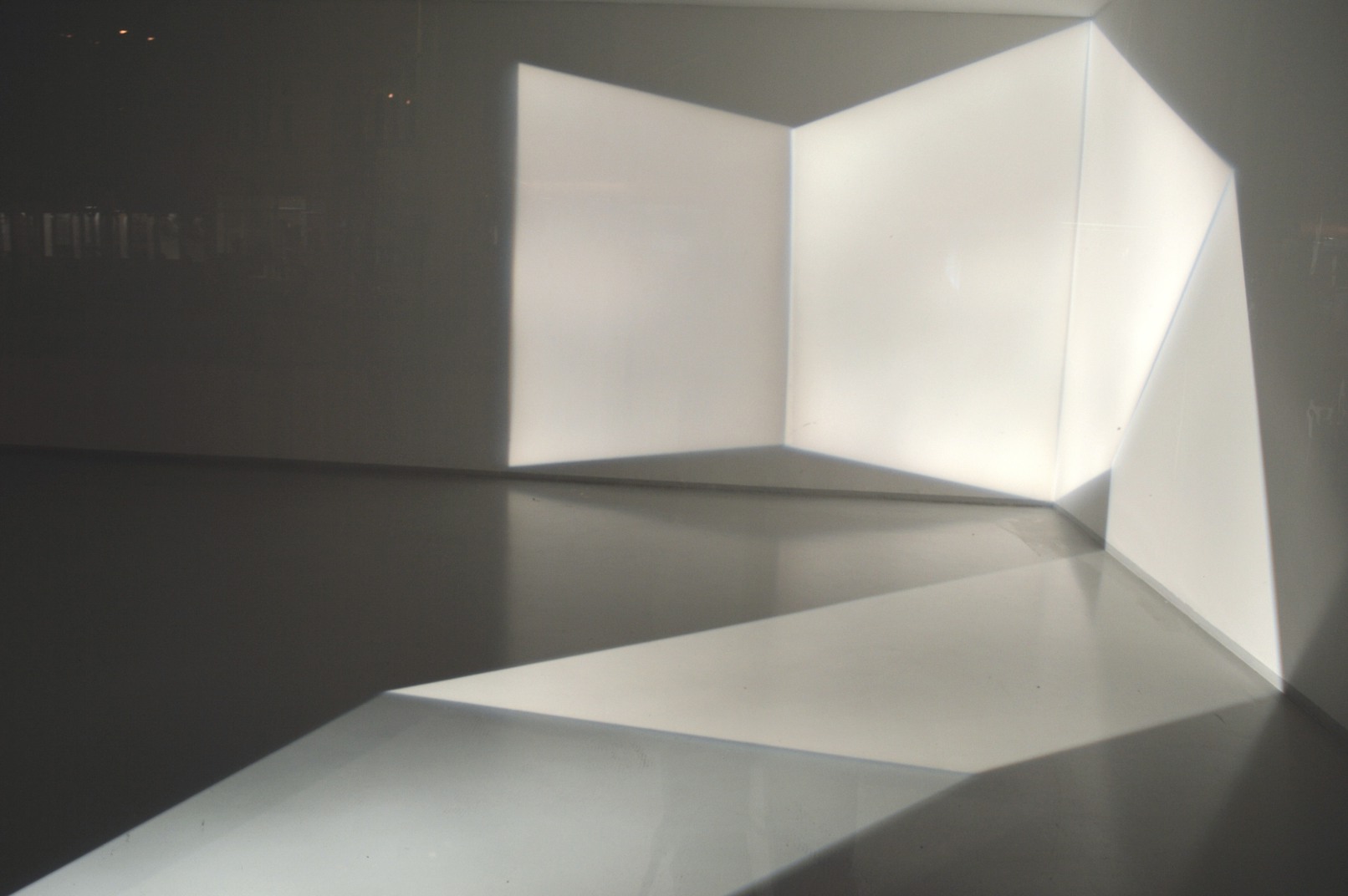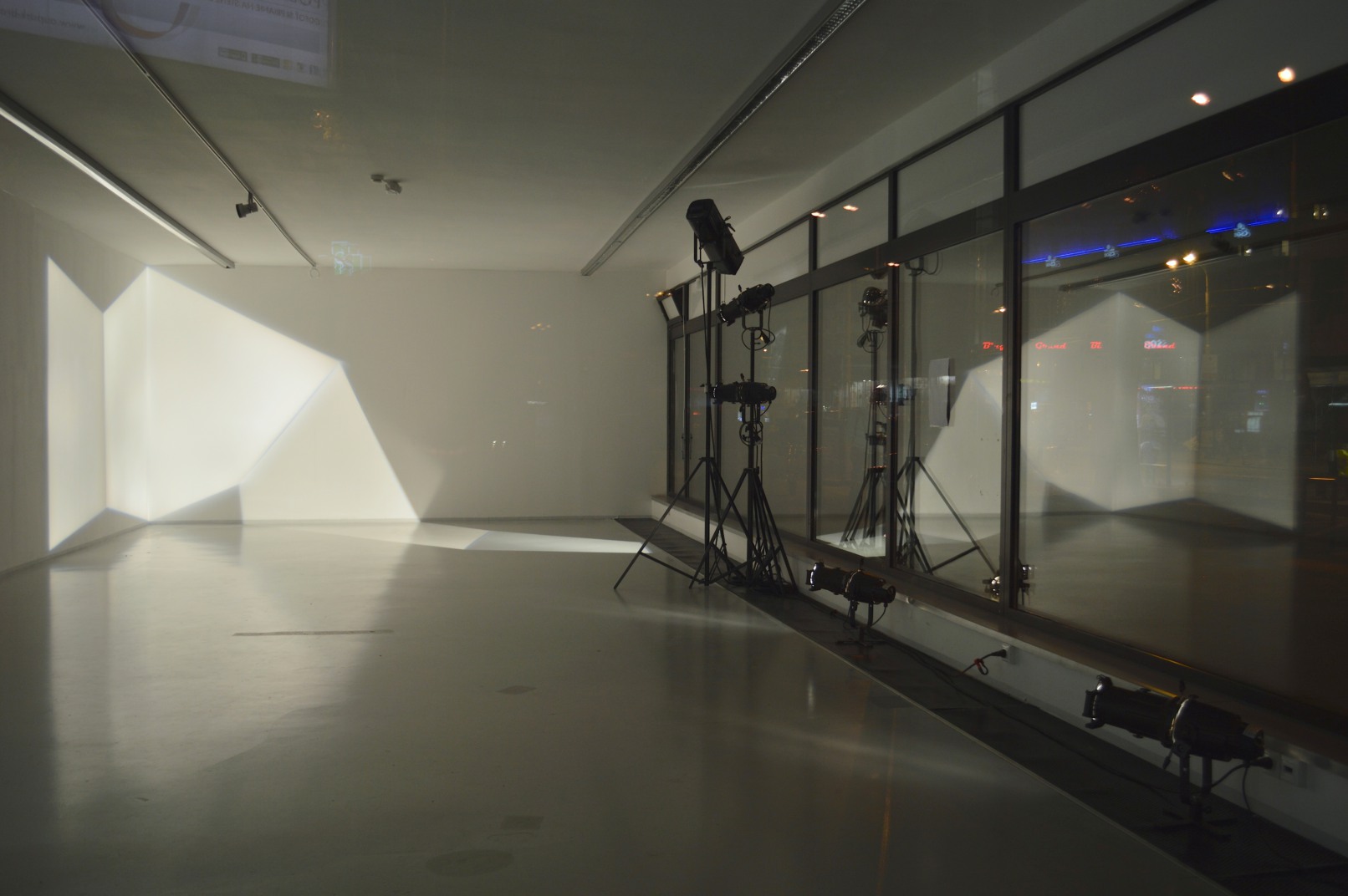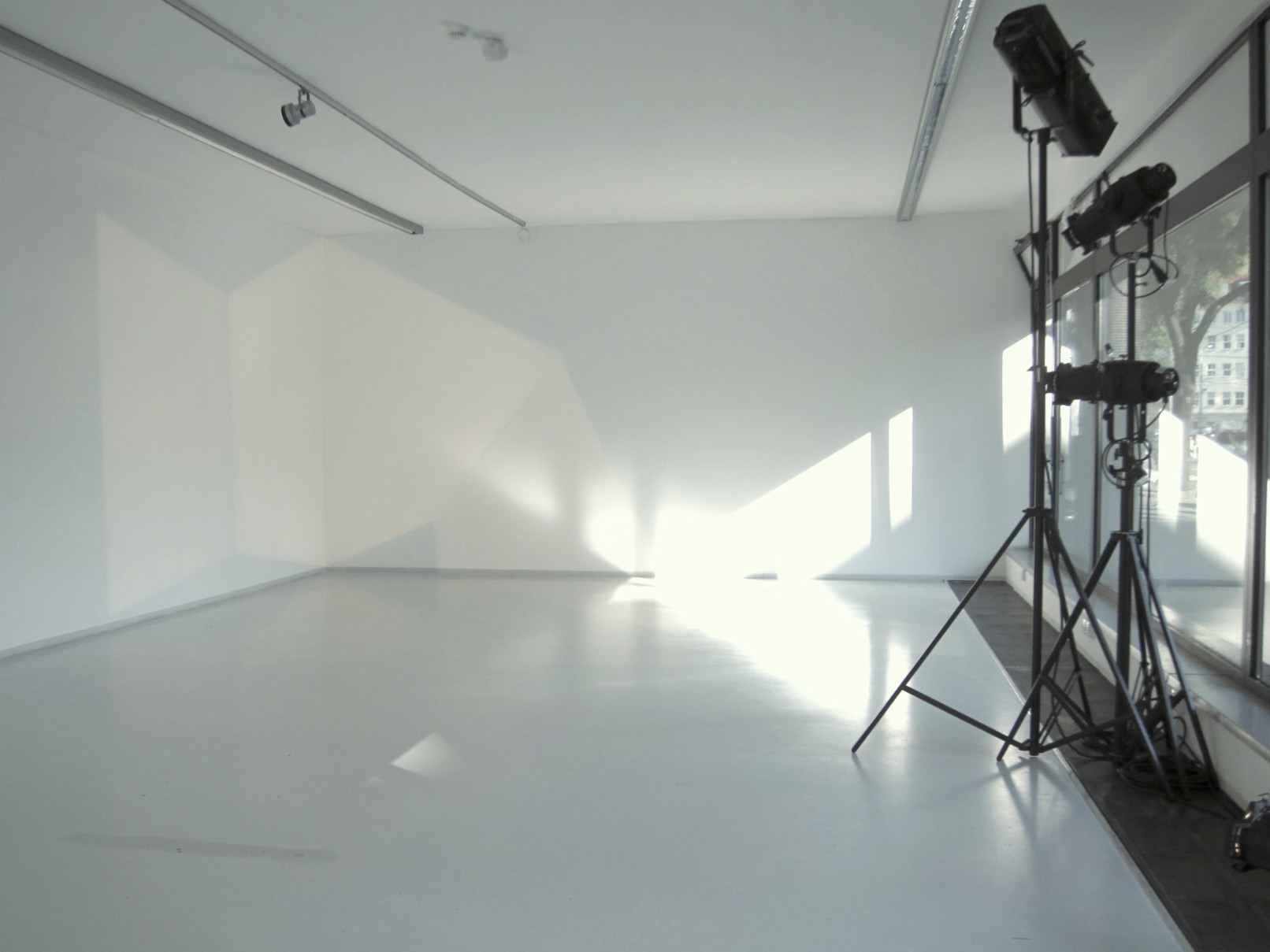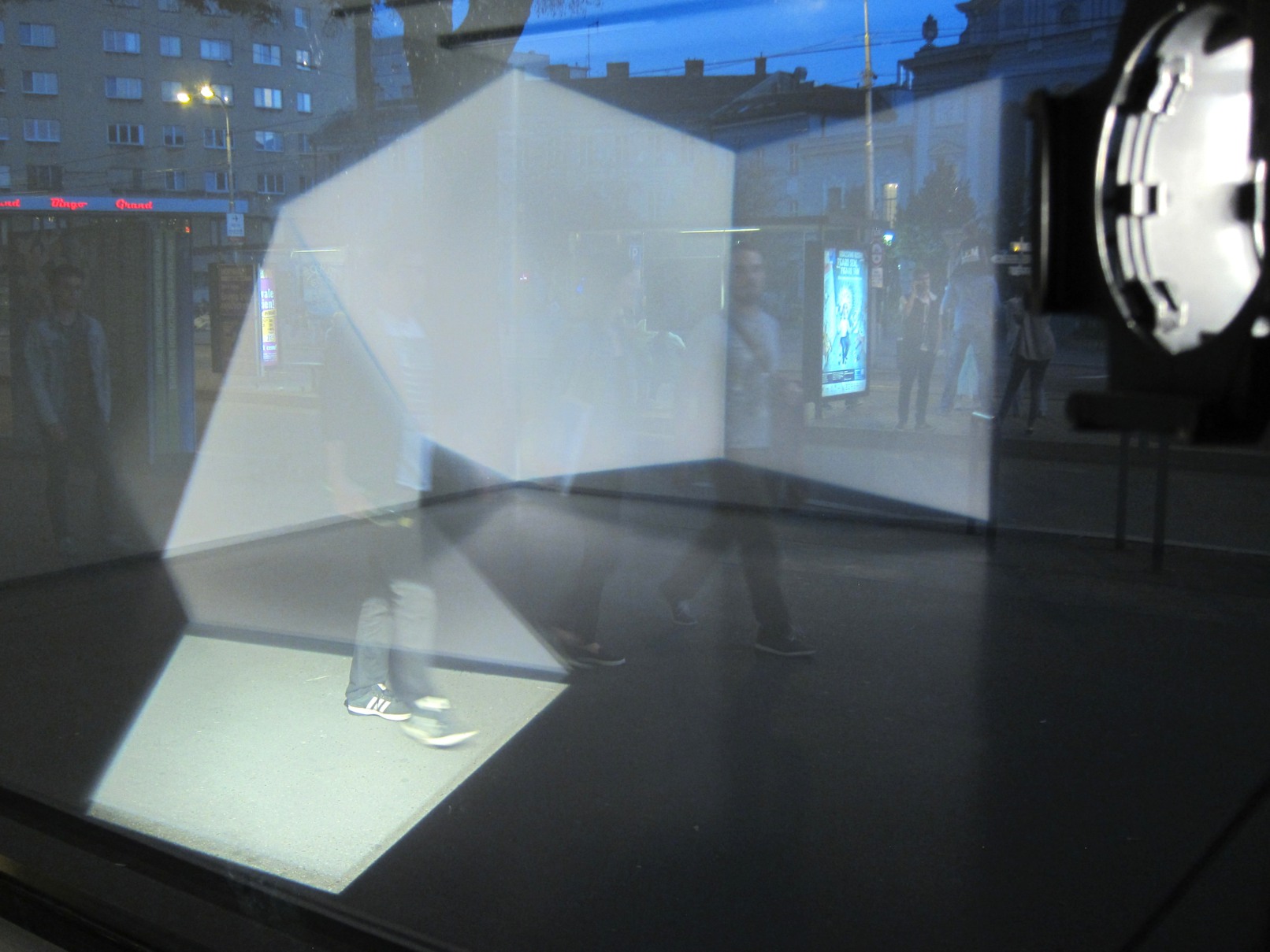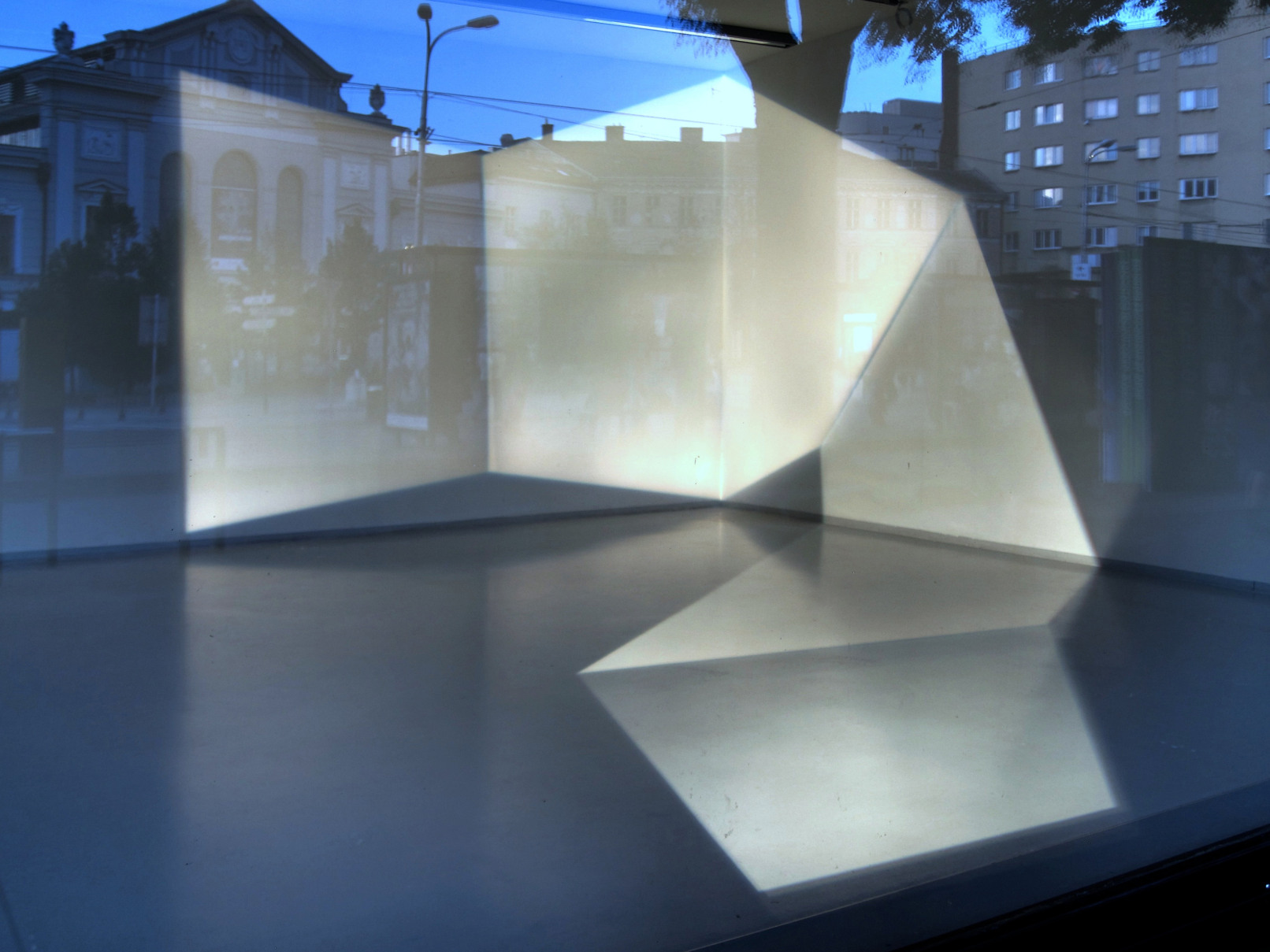Psychogeographic Junction
Psychogeographic Junction, 2015, 6 profile spotlights, light surfaces, glass facade, sunlight, dimensions variable, Kunsthalle Bratislava, Slovakia
Info
The group exhibition Psychogeographic Junction is inspired by certain “psychogeographic” methods of exploring urban space, firstly practiced by the Situationists in the 1950s in Paris. The project Psychogeographic Junction was created specifically for Kunsthalle LAB in Bratislava, the convenient downtown position of which makes it a junction of different reflections, perceptions and readings of the city. In addition, Kunsthalle LAB is a window gallery with a large transparent facade that blurs the boundaries between the interior and exterior/everyday life and contemporary art. […]
The Munich-born artist and architect Hinrich Gross, who studied architecture and fine arts in Hamburg, creates light installations, which mirror, overlap, redouble, obscure, and enhance the given structures through the ephemeral medium of illumination. He has realized numerous exhibitions and projects in Germany, Europe, Japan and the United States.
At the Kunsthalle LAB, he is redefining the site through the medium of light, transcending the boundaries of inside and outside. In his new work created in situ light expanses extend in overlapping layers and folds across the wall and the floor. They merge with the sunlight entering the space, projecting reflections onto the windows of the exhibition space and visual reverberations onto the sidewalk adjoining the LAB.
Playing upon given spatial preconditions, Gross’s ephemeral light sculpture is open to a spectrum of interpretations. As the artist himself has pointed out, it revolves specifically around the interrelationship between the urban space and the exhibition space, conflating the “ivory tower” of art and the mutable states of the urban environment. On another level, it subtly addresses the eventful history of Bratislava situated at the margins between East and West, while symbolically inverting and refracting the geopolitical situation, and, in the artist’s words creating “a space and counter-space as a metaphor for both its destiny and potential.”
Belinda Grace Gardner, exhibition curator
